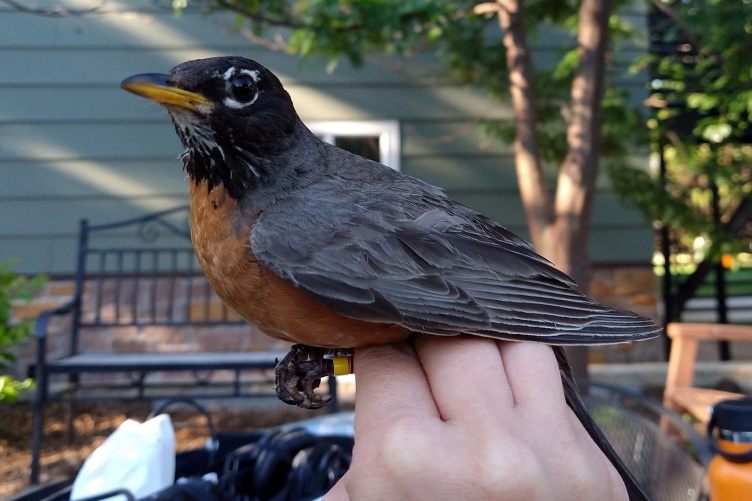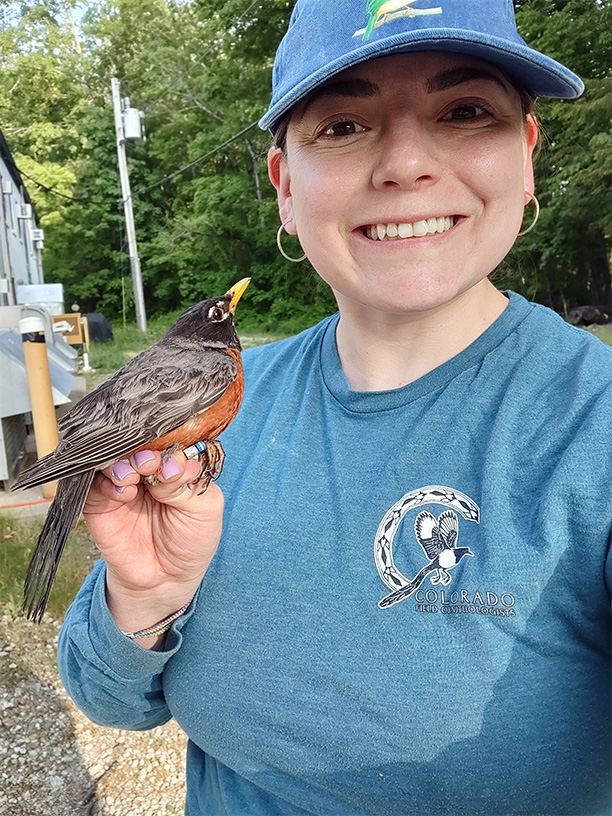
A new journal article co-authored by UNH postdoctoral research associate Karina Sanchez examines noise inequity in formerly redlined urban environments. Photo credit: Karina Sanchez
Key Research Finding
Neighborhoods historically affected by redlining — a practice of discriminatory zoning — experience significantly higher levels of noise pollution compared to other areas. This uneven distribution of noise not only affects the people living there but also has complex effects on the behavior and well-being of various urban wildlife species.
In an unprecedented study — the first of its kind to examine noise inequality in city neighborhoods impacted by the discriminatory practice known as redlining — a multi-university research team, including a scientist from UNH’s College of Life Sciences and Agriculture, found that these historically disadvantaged urban neighborhoods have louder, and more, noise. Loud noises are associated with a greater number of detrimental health effects in people, as well as negative impacts on the wildlife living in places where loud noises are persistently present.
The study, which was recently published in Nature Ecology and Evolution, found that urban communities that were once redlined — i.e., the housing practice that began in the 1930s and sought to deny mortgages based on race and ethnicity — experience significantly more noise than non-redlined urban areas, which in turn results in a greater impact on the people and wildlife living in them.
Karina Sanchez (pictured here), a postdoctoral research associate specializing in urban ecology, co-led a study looking at noise levels in redlined and non-redlined neighborhoods across more than 80 U.S. cities.
The study was inspired by recent works focused on the impact of human social decisions on wildlife and habitats, including human habitats, said Karina Sanchez, a co-lead author on the paper and a postdoctoral research associate studying urban ecology at UNH.
“We frequently don’t consider ourselves a part of wildlife habitats, but that’s starting to change as more studies like this one demonstrate our close ties to the ‘wild’,” said Sanchez, whose work is also supported by the New Hampshire Agricultural Experiment Station and UNH’s Postdoctoral Diversity and Innovation Scholars program.
She added, “Research has shown that racial segregation often correlates with different habitat types — i.e., resulting in some neighborhoods with lots of green space and some without any — and greater access to green space and similar natural environments can impact your mental health and wellbeing. But people don’t often realize that these differences in habitats and wildlife exposure in cities are frequently the direct result of racial segregation, which is what we show in this paper.”
Impact of Redlining on Urban Noise and Ecology
For this study, Sanchez joined scientists from Colorado State University (CSU), Bangor University and New Mexico State University to examine urban noise distribution across redline and non-redlined neighborhoods in 83 U.S. cities. The research team found that neighborhoods with a history of redlining experienced noise levels up to 17% higher than those in non-redlined areas. And this noise pollution not only affects human health — increasing risks for hearing loss, stress, insomnia, hypertension and cardiovascular diseases — but also has detrimental effects on wildlife. It can disrupt animal behavior and community structures, and may alter patterns of foraging, mating and movement, making some species more vulnerable to predators and leading others to avoid noisy areas altogether.
“Urban ecology is a fairly new discipline of research and we’re still learning about the impacts of urban noise on urban wildlife,” said Sanchez. “What we’ve found so far is that different species respond differently to the various aspects of urban habitats–and some seem to even benefit in ways.”
She added, “For example, one study showed that urban-based white-crowned sparrows have better survival rates in urban areas, but if that urban area is also noisy, they’ll have more bodily health issues. So we can see why it’s really important to examine the nuanced aspects of urban habitats to fully tell the story — and the same goes for humans.”
The Broader Implications: Human and Wildlife Well-being
Sara Bombaci, a co-lead author of the study and an assistant professor at CSU, emphasized the interconnectedness of ecological integrity and social equity, adding that “ecological degradation exacerbates injustices against those living in formerly redlined areas because people benefit from nature and wildlife.”
“We need to be thinking more about how these systemic injustices and problems are manifesting to shape ecology and evolution,” said Bombaci.
For this study, the research team evaluated hundreds of studies on noise impacts on wildlife and attempted to analyze ecological data on noise impacts to wildlife, although they found such data to be underrepresented in redlined communities, reflecting a continuation of historical biases. Recognizing these disparities, cities like Denver are now considering noise in their equitable urban planning efforts, particularly when improving access to parks and green spaces in underserved communities. This research emphasizes that mitigating the impacts of noise is essential to fully realize the benefits of such green spaces for all residents, human and wildlife alike.
According to Sanchez, a key takeaway from this research is showing the continued effects of racially segregated practices nearly a century after they began with the hope that municipal planners and developers can use that information to make more equitable decisions moving forward.
“A 100 years ago, the decisions to invest in some neighborhoods and not others not only affected the people living in those neighborhoods at the time, but it’s also had a legacy effect on all the animals inhabiting those spaces today,” said Sanchez. “My hope is that that lasting impact is carefully considered as our urban environments grow and change.”
This research was funded by Colorado State University. J.R.N.-O., T.J.L., E.A. and M.L. were supported by NSF Graduate Research Fellowships. K.A.S. was supported by an American Association of University Women Fellowship.
This work is co-authored by Sanchez; Bombaci; CSU students Jasmine Nelson-Olivieri, Tamara Layden, Edder Antunez, Monica Lasky, Steven Starr and Anahita Verahrami; and by Ali Khalighifar (CSU), Theresa Laverty (University of Chicago and New Mexico State University) and Graeme Shannon (Bangor University). This material is also based on work supported by the NH Agricultural Experiment Station through joint funding from the USDA National Institute of Food and Agriculture (under Hatch award number 1026211) and the state of New Hampshire.
You can read the published article, Inequalities in noise will affect urban wildlife, in nature ecology & environment.
-
Written By:
Nicholas Gosling '06 | COLSA/NH Agricultural Experiment Station | nicholas.gosling@unh.edu




















































